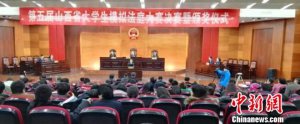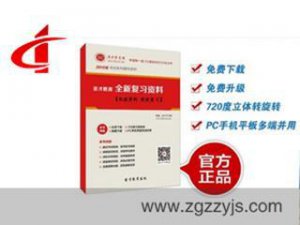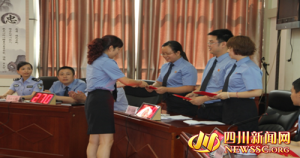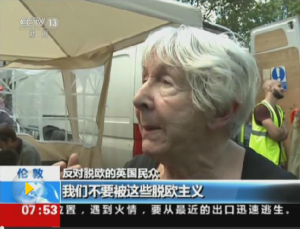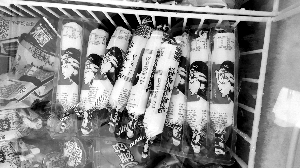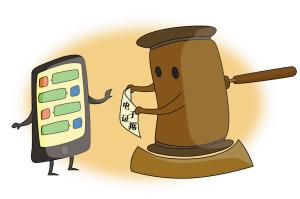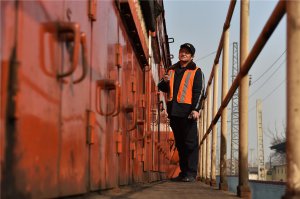|
Stratic Advice on Intellectual Property Investment in Asia 苏冉 IssueⅠ: Legal framework of protection on software copyright in P.R.C and Singapore A) P.R.C In conjunction with China’s astonishing economic growth over the past two decades, especially after the entrance to WTO, China has steadily improved its legal framework on Software Copyright by checking and clearing large-scale regulations both in domestic and international activities. Frankly speaking, China joined in three vital international treaties relate to copyright: the Berne Convention , TRIPs and Universal Copyright Convention. Moreover, China and US signed MOU especially for software in January 1992. All these Conventions are regarded as a milestone to reflect China’s dramatic promotion and strong determination to build a satisfactory environment for foreign software investors. Similarly to US, P.R.C has chosen to protect software under copyright law rather than trademark, patent, or contract law. One year after Copyright Law Amendment in 2001, Chinese Council corrected its software-specific “Computer Software Protection Rules” , to deal with new problems prevailing in software protection nowadays. Under the Rule, software is defined as two particular types: computer program and their relevant documentation. Furthermore, since MOU came into force, computer software is protected as a literary work. Third, according to the conditional nation treatment here, foreigners are required to comply with “connecting factor”, to sum up, either first publication or nationality/residence of the author in China or in any of these countries ,between the work and China or a country who is a member of the WTO, or the Berne Convention. So, despite your software products first being published in US, you can still enjoy the original copyright and the legal protection on in China. Except from the above rules, other laws also have supportive stipulation on the protection of software copyrights as follows: (a)The General Principle of Civil Law, the country’s current basic civil law, has authorized the author’s copyright in general; (b)The Criminal Code has a section of articles referring to piracy offences, with “Dual Punishment Principle” in front of copyright encroachment; (c)The newly amended Foreign Trade Law (adopted in Feb). B) Singapore The general legal framework of software copyright protection in Singapore is almost the same as P.R.C, but with some characteristics of its own. Actually, different from P.R.C based on Civil law background, laws and litigations in Singapore are principally modeled on the English system under Common law system till nowadays. Pursuant to certain legal revolutions, modern copyright legislation contains the same international conventions as P.R.C: the Berne Conventions, Universal Copyright Convention, and TRIPs. But, Singapore signed ASEAN Framework on Intellectual Property Cooperation and the WIPO Copyright Treaty as a member of ASEAN. Turning to its domestic laws, the latest Copyright Act 1999(revised edition) is the principle one, with some other relevant regulations for enforcement. And it also definites software program into literary work under protection. In addition, Singapore owes large resources of case laws so as to make its legal conditions more particular than that in P.R.C. The amended Act is first purposed to address issues arising from the use of copyright materials in a digital environment, especially provide legal certainty for the use of copyright in cyberspace. For instance, the extension of concept “reproduction” .Second, the Act plays another role in enhancing performer’s rights, offering two new defenses to allegations of copyright infringement. Therefore, merely surfing the Web doesn’t constitute software copyright infringement, if it’s necessary to browse. Even , Singapore passed the Electronic Transactions Act 1998 to give statutory protection of Network Service Providers. At these points, Singapore seemingly forwards a step further than P.R.C, declining its attention on encouraging the growth of a knowledge-based economy and promoting E-commerce and creative innovations. Last but the most significant point, Singapore and the United State signed a bilateral free trade agreement (FTA) on May 6th 2003, and entered it into force from January 1st 2004. Virtually, this is the first FTA between US and an Asia country .So it’s doubtlessly the greatest advantage for Singapore to attract US investors, apart from other Asian countries. They would encourage the entrepreneurship, investment, job creation and growth in our own technology, science and creative industries as well as set the stage for Singapore’s emergence as a global IP hub. Issue Ⅱ: Implementation on Software Copyright Law in P.R.C and Singapore Sufficient and effective enforcement is more useful and practical than recorded documents, with no exception to P.R.C and Singapore. (ⅰ)Role of Government A)P.R.C Learned from Annual Report on the Protection of Intellectual Property Right in China during the past 5 years by the head officer Jingchuan Wang in TableⅠ , you can see copyright administration at various levels make remarkable progress in encouraging innovation, promoting industrial development, regulating market order, and even improving the opening-up policy. As a matter of fact, the People’s Courts, the People’s Prosecution Department, National Copyright Administration Centre and Public Security compose the backbone of the implementation of copyright law in China with civil remedies, criminal sensations and administrative punishments, such as fine. And border enforcement assistance to copyright owners by the Customs and Excise Department is also available. TableⅠ: The Administration on Software Copyright In P.R.C Year Registration Prosecute Cases Resolved Cases Resolved Cases Rate Seized Pirates(M) Top 1 Region of Piracy 1999 1,041 1,616 1,515 93.75% 20.14 Shenzhen 2000 3,300 2,457 1,980 95.30% 32.60 Guangdong 2001 4,620 2,683 2,327 97.52% 61.75 Guangdong 2002 4,860 2,740 2,604 99.02% 67.90 Guangdong 2003 5,020 6,120 5,793 97.64% 73.28 Beijing Statistics from NCAC (National Copyright Administration Centre Fortunately, China has begun to regard software as an industry with strategic significance while formulating effective policies in areas including anti-piracy and anti-monopoly. To adapt to the legal framework, China has shifted its attention upon educating software users and strengthening the law. “Government departments are being asked to show a good example in using copyrighted software only and make software budget each year”. For example, Beijing, Shanghai, Guangdong buy over 3,000 software products every year through public bidding. What’s more, the National Software Government Procurement Regulation will probably act in the near future. Eventually, Chinese government is trying to treat all software companies equal in P.R.C, no matter domestic or foreign countries. Nevertheless, given China’s vast geography and population, it would be an awesome task for the central government to manage pirating activities throughout the entire country. On the other hand, due to lack of resources, the lack of judicial expertise, the unpredictability of trial outcomes, and large costs, litigation in Chinese courts remains a risky and expensive response to Chinese copyright violations. Another administrative difficulty arises from the increasing decentralization of the Chinese government. Much of China's copyright enforcement takes place at the provincial and local levels; the national government lacks the resources and control to effectively monitor nationwide pirating activity and to impose national enforcement policies. B) Singapore Switching to Singapore, the Intellectual Property Office of Singapore (IPOS) is its senior administration department, and it leads Singapore to the success in copyright infrastructure. Singapore has announced a number of meaningful standards through requirements for tough penalties to combat piracy and counterfeiting, including, in civil cases, procedures for seizure and destruction of pirated and counterfeit products, and a requirement to provide for statutory and actual damages to remedy such practices. There has been a rule in Singapore that government could only allowed to use copyrighted software since 1996. In order to obtain efficiency, Singapore maintain civil remedies and criminal penalties for circumvention of technology protection measures, and it also has in place implementation allowing for border seizures of infringing articles by customs officials. For example, the copyright infringement is punished with a maximum fine of S$100,000 or five years’ imprisonment or both. So, in comparison to P.R.C, the least time for imprisonment is shorter .But due to the judge’s free power under common law system, the court is increasingly harsh in their sentencing in respect of infringement of copyright. In other words, criminal obligation will become heavier with more limitation in Singapore. In the contrast with Chinese administrative punishments, Singapore has a large scope of interlocutory remedies to fill in the blank area between civil remedies and criminal sensations, and they are three main types: (a) the interlocutory injunction---It is an injunction obtained before the trail often with the main objective of maintaining the Stats quo between the parties pending the outcome of the trail. The interlocutory injunction may be in a mandatory or prohibitory form. (b) the Anton Piller Order---It’s developed from Anton Piller KG v.Mfg Processes Ltd as a safeguard system of evidence for avoiding the defendant to destroy and hide the evidence of copyright infringement, if the plaintiff shows an extremely strong prima facie that his right are being interfered with, or the damage, potential or actual are very serious to the plaintiff, or even there must be clear evidence to proof the defendants faults. (c) the Norwich Pharmacal Order.---The further expansion of Anton Piller Order to raise over the privilege against self-incrimination from Rank Film Distributors Ltd v. Video Information Centre Virtually . However, case law in Singapore has now established that where the privilege against self-incrimination exists, an undertaking from the plaintiff/ applicant not to use the information obtained in criminal proceedings is not an adequate safeguard for the defendant’s privilege against self-crimination. Singapore courts have also held that they don’t have the power to order that the information be inadmissible in any subsequent criminal prosecution. Relying on common law foundation, people in Singapore prefer to a lawsuit rather than mediation while more mediation in P.R.C, once in the face of a dispute. Consequently, it would like to be more time and energy consuming somehow, for it costs at least one year of a civil procedure in the High Court of Singapore. Last but not least, along with legsilation changes, Singapore Administration departments are also mounting a public campaign targeting both consumers and businesses to increase their awareness on the benefits and other implications of the new laws. There’s broad-based public awareness initiatives like the HIP Alliance’s year-long anti-piracy campaign– “The Real thing is the Right thing”, and brain Wave, Singapore’s first reality television show on IP. (ⅱ)Role of Anti- Piracy Organizations Both P.R.C and Singapore joined in Business Software Alliance (BSA) ,and WIPO several years ago and established domestic anti-piracy alliances at their own respective locality. The alliances played an active part in combating piracy and protecting the interests of right holders. They always declare laws, promulgate routine reports of current protection on TV, newspapers, and Website and show different points between pirate and authorized products. In the contrast with P.R.C, Singapore has other special disputes resolution organs under its common law system, including the small claims tribunals, E-commerce disputes centre. What’s more, Singapore collaborates with other ASAEN countries to harmonize IP rights with international and regional organizations such as the Office of Harmonization of the Internal Market (OHIM), the European Union, the French National Office of Industrial Property, and IP Australia. (ⅲ)Introduction of Judgments in Precedent Cases A) P.R.C In a landmark verdict on April 16, 1996 against Beijing JuRen Computer, the Beijing No.1 Intermediate Court delivered judgment in favor of the Business Software Alliance (BSA) upholding the plaintiffs' intellectual property rights and ordering the defendant to (a) publicly apologize to the plaintiff; (b) pay over RMB600,000 (US$70,000) in damages, including court costs and accounting costs; (c) pay additional fines directly to the court. The court also ordered the defendant to undertake not to infringe intellectual property rights in the future, and the law enforcement officials to confiscate all computers and software seized during the raid on the defendant's premises. In another case, the same court rendered a judgment against Beijing Giant Computer Co. for software copyright infringement. These were the first cases decided in favor of a US plaintiff in a Chinese court. 总共3页 1 [2] [3] |


